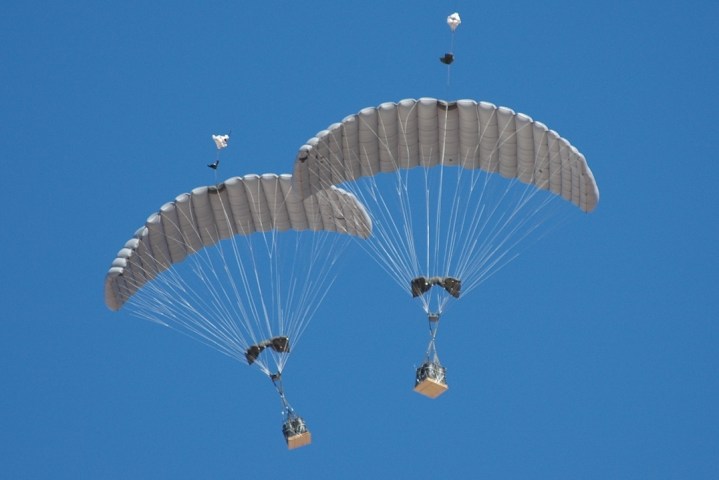
When it works, GPS can pinpoint a location with incredible precision, but the technology is not always accurate. GPS signals often are difficult to obtain in less-than-ideal environments and are susceptible to blocking by enemies. Instead of GPS, the Army is exploring the use of new navigational software for its Joint Precision Airdrop System (JPADS), that delivers necessary supplies to troops in the field.
Instead of GPS coordinates, the new navigational software relies on “old school” imagery to locate a drop point. “It’s what we humans have been using since the beginning of time, vision-based navigation,” said Gary Thibault, supervisory mechanical engineer for the Airdrop/Aerial Delivery program in the office of the U.S. Army’s Product Manager Force Sustainment Systems. The new system is being developed by Draper Lab in Cambridge, Mass, along with assistance from the Army, Air Force, and other non-military entities.
Related: The iconic Jeep Wrangler might follow in the Willys’ footsteps and enlist in the army
The new vision-based software called “Lost Robot.” determines its location by scanning images captured from a camera mounted on the cargo that is being dropped. Algorithms are used to identify notable ground terrain features such as trees and buildings, and the system then compares those structures with satellite images stored in a JPADS database on the cargo itself. This information is gathered before cargo release, allowing the cargo to identify its location and guide its trajectory without external assistance, and without susceptibility to external blocking efforts.
To meet military standards, the new JPADS system has to deliver up to 10,000 pounds of cargo to target within 250 meters. Existing GPS solution are capable of dropping 2,000 pounds within 150 meters of a target. If successful, the new image-based JPADS could be adapted for use in other branches of the military, including drone surveillance and remote unmanned vehicle control. It also could be used to guide paratroopers as they descend to a target area.



